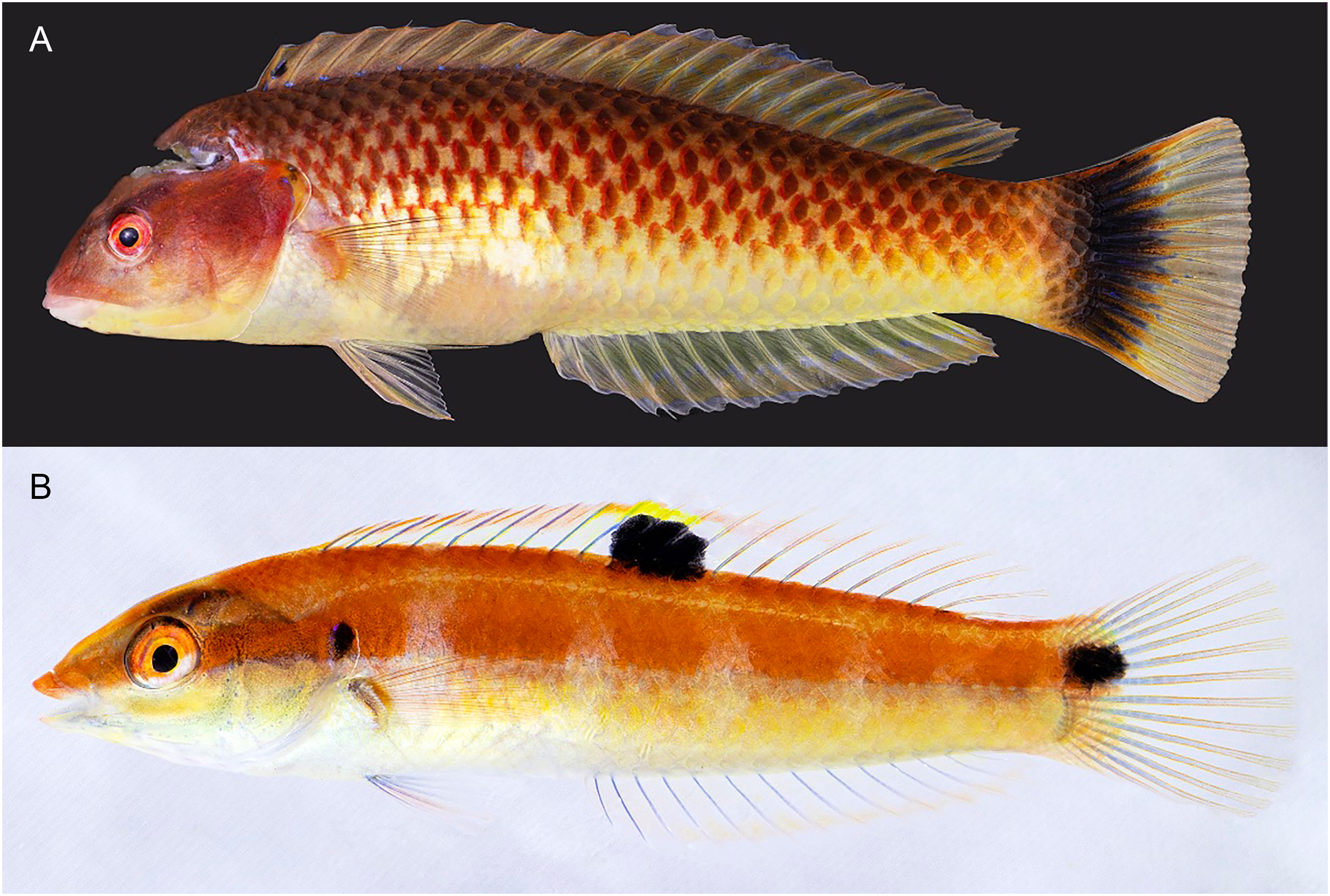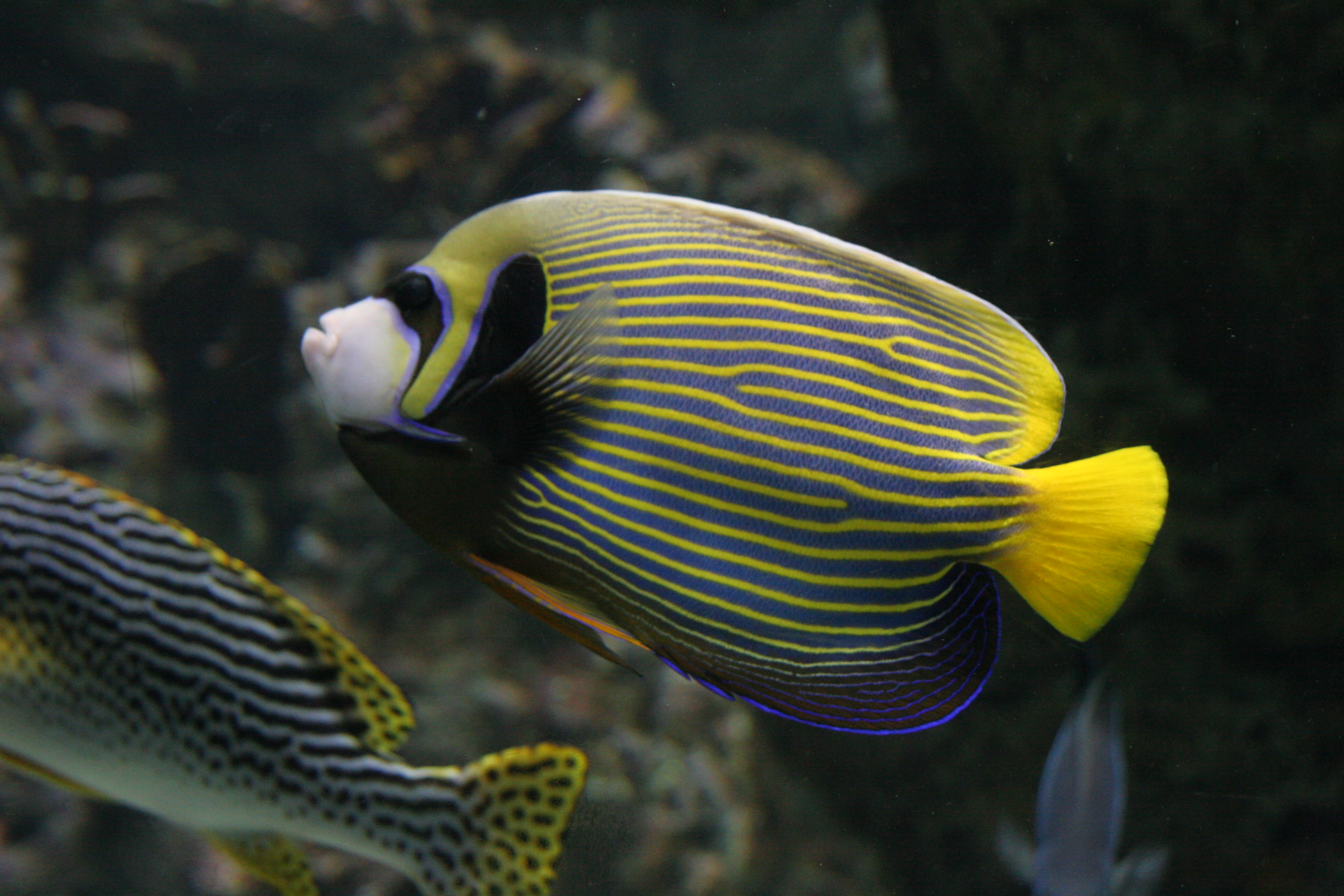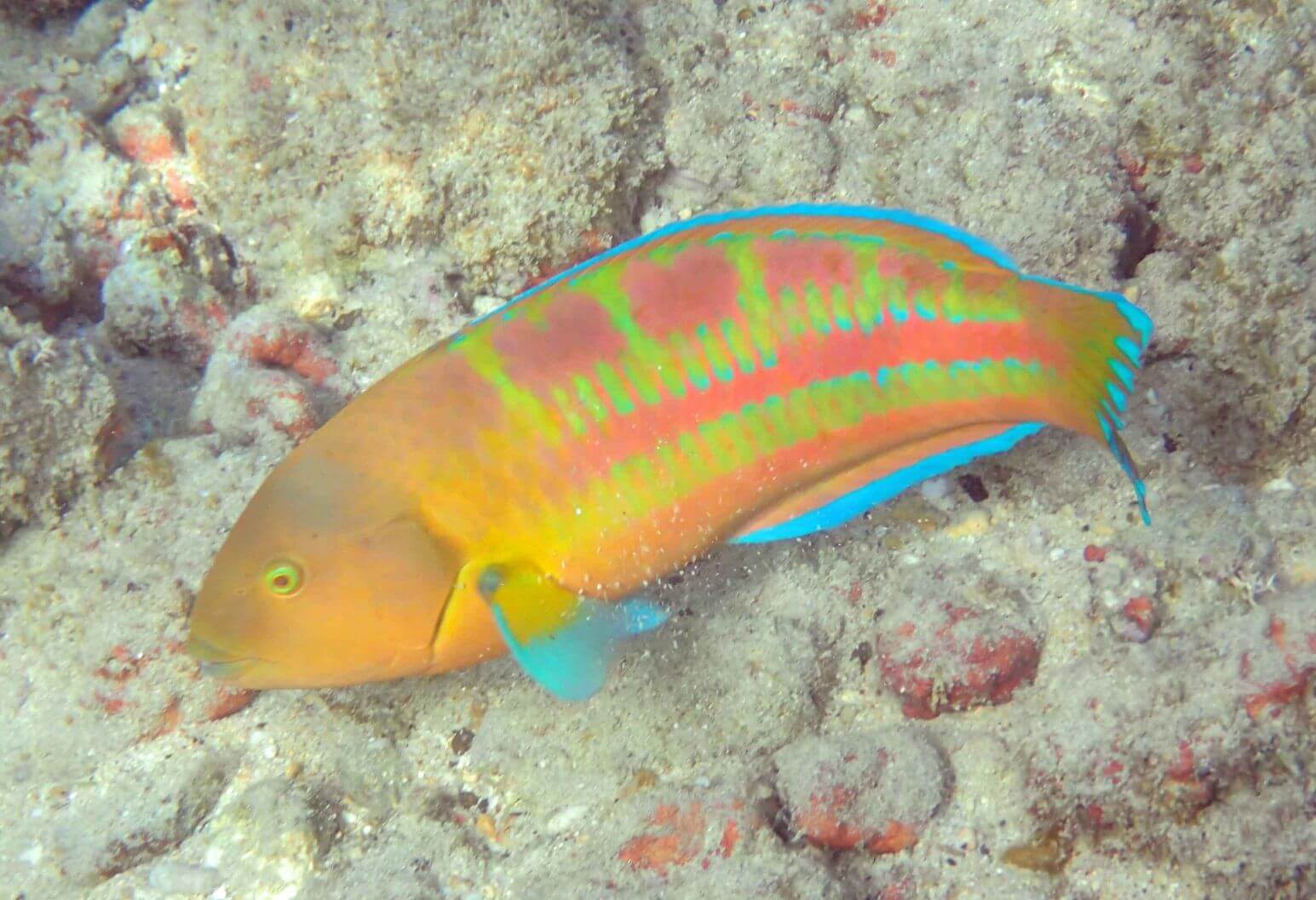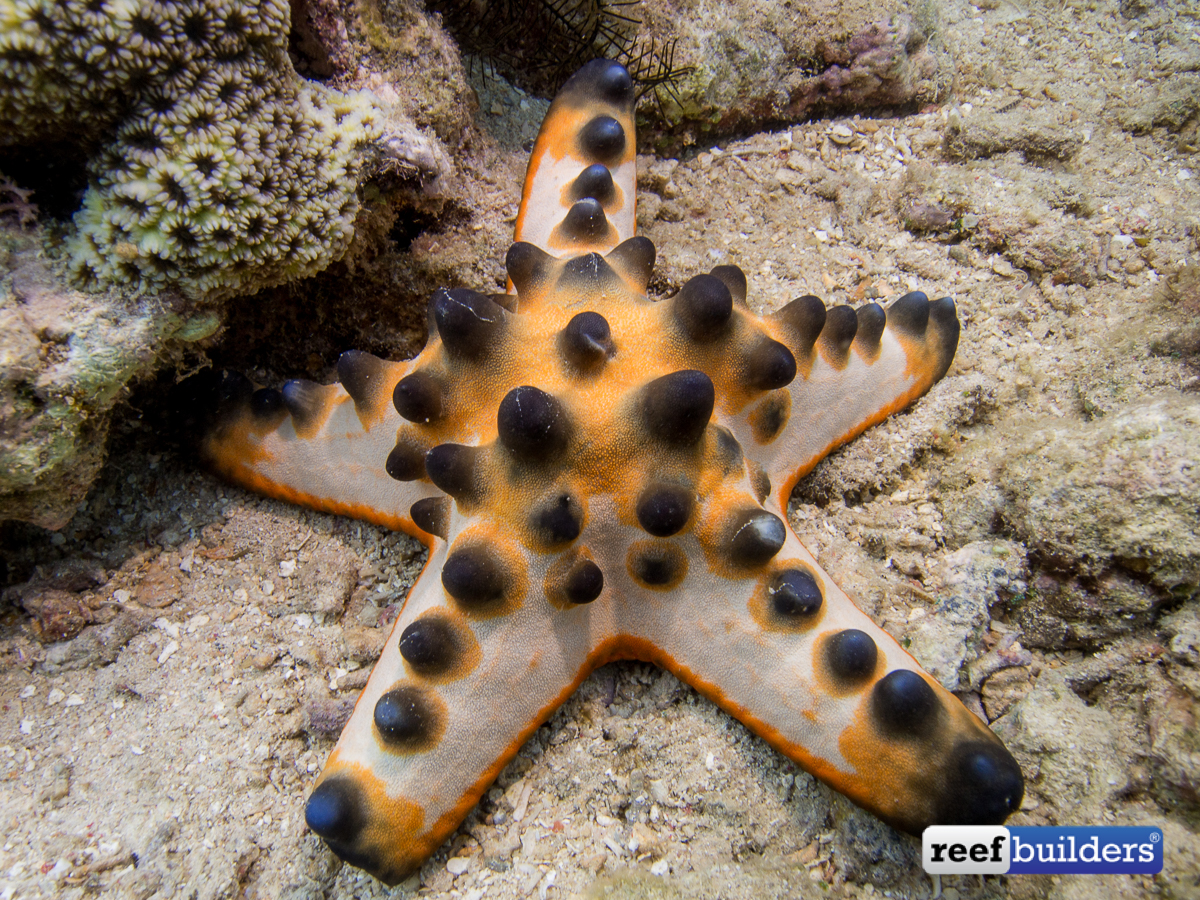A new species of wrasse has been described from the Revillagigedo Archipelago of Mexico, in the tropical eastern Pacific Ocean. Named the Tailspot wrasse, Halichoeres sanchezi belongs to the Halichoeres melanotis species complex that is found throughout the region, and its mtDNA differs by just 2.4{a47be734f0df8d7f120a7df290cf380c79376e8356d1aab405383bb23aa6ce67} from its nearest relative, H. melanotis from Panama, and 2.9{a47be734f0df8d7f120a7df290cf380c79376e8356d1aab405383bb23aa6ce67} from Halichoeres salmofasciatus from Cocos Island, off Costa Rica. It has been described by Benjamin C. Victor?, Benjamin W. Frable, and William B. Ludt in the journal PeerJ.
The authors state that the melanotis complex is distinguished from others in the region by a black spot on the opercular flap and black area on the caudal fin of the males. Juveniles of the newly described species resemble H.salmofasciatus and malpelo although sanchezi has an oblong black spot with a yellow dorsal margin on the mid-dorsal fin of initial-phase adults as well as on juveniles. Terminal phase male sanchezi differ by being vermilion to orangish brown with dark scale outlines, a white patch on the upper abdomen, and a prominent black band covering the posterior caudal peduncle and base of the caudal fin.
The new species is endemic to the Revillagigedo Archipelago of Mexico, forming the Reserva de la Biosfera Archipielago de Revillagigedo, which includes the islands of Clarion, Socorro, San Benedicto, and Roca Partida. The Archipelago lies 400 km south of the Baja California peninsula and 700 km west of Manzanillo. It is one of the more remote and least visited of the island groups of the tropical eastern pacific, compared to more well-surveyed TEP islands, such as the Galapagos Archipelago.
The discovery was made during a joint collecting expedition in 2022. The terminal phase male holotype measured 123mm long. Their habitat was a large, even plain, approximately 21–22 m deep, composed of volcanic gravel-rubble surrounded by lava boulders and with a few boulders dispersed in the plain amongst a dark bottom. Patches of white gravel were interspersed among the dark volcanic gravel-rubble areas.

Halichoeres sanchezi is named after Prof. Carlos Armando Sanchez Ortiz, of the Programa de Investigacion para la Conservacion de la Fauna Arrecifal (PFA),
To access the full scientific paper go to Victor BC, Frable BW, Ludt WB. 2024. Halichoeres sanchezi n. sp., a new wrasse from the Revillagigedo Archipelago of Mexico, tropical eastern Pacific Ocean (Teleostei: Labridae) PeerJ 12:e16828 https://doi.org/10.7717/peerj.16828




